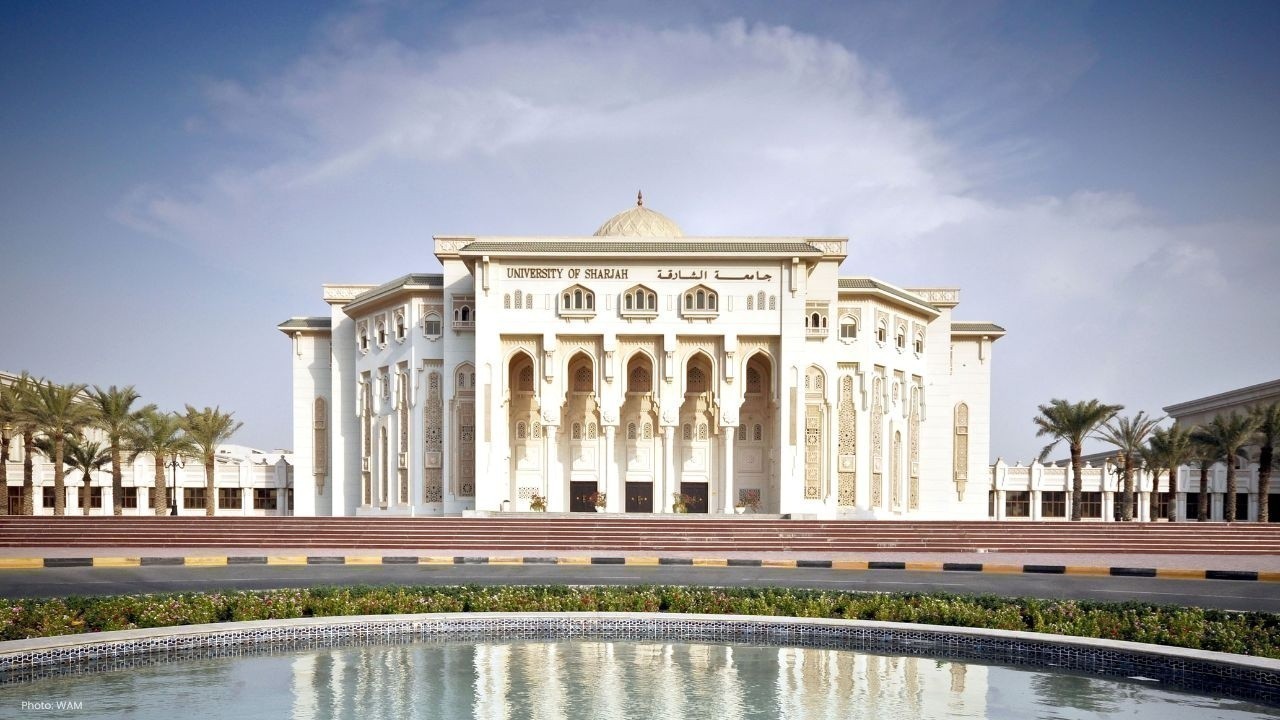
Post by : Zayd Kamal
In the past few decades, technological advancements have transformed many industries, but few have had as profound an impact as 3D printing. Once seen as a niche technology, 3D printing, also known as additive manufacturing, has rapidly evolved and is now reshaping manufacturing processes and driving innovation across a wide range of fields. From custom-designed products to rapid prototyping, how 3D printing is changing manufacturing and innovation is evident in countless ways.
At its core, 3D printing is the process of creating three-dimensional objects from a digital design. Unlike traditional manufacturing methods that involve subtracting material from a larger block (e.g., cutting, drilling), 3D printing builds objects layer by layer, making it highly versatile and capable of producing complex designs that are impossible or cost-prohibitive to make with conventional techniques.
The technology uses various materials, including plastics, metals, ceramics, and even biological substances, to create a wide variety of products. The ability to print objects directly from a computer file allows for unprecedented customization, efficiency, and flexibility in the manufacturing process.
One of the most significant ways how 3D printing is changing manufacturing and innovation is by transforming how products are designed and produced. Traditional manufacturing methods often require expensive molds, large quantities of raw materials, and lengthy production timelines. In contrast, 3D printing allows for rapid prototyping, which helps businesses test designs quickly and at a fraction of the cost.
For example, companies in the automotive and aerospace industries are using 3D printing to produce prototypes, parts, and tools with greater precision and less material waste. This reduces both time and costs, leading to faster development cycles. In some cases, it even enables the creation of parts that are lighter, stronger, and more efficient than those made using traditional methods.
Moreover, 3D printing opens the door to mass customization. Unlike mass production, which typically involves standardized designs, 3D printing enables manufacturers to create unique, tailor-made products that meet individual customer needs. This has been especially beneficial in industries like fashion, healthcare, and consumer goods, where personalization is highly valued.
Another way how 3D printing is changing manufacturing and innovation is by reducing material waste. Traditional manufacturing often involves cutting away excess material, which can lead to significant waste. In contrast, 3D printing only uses the material necessary to build the object, minimizing waste and making the process more sustainable.
For instance, when producing a component through conventional methods, a large block of material may be cut down into the desired shape, leaving behind a considerable amount of scrap. With 3D printing, the material is precisely added layer by layer, resulting in far less waste. This not only makes the process more cost-effective but also more environmentally friendly.
Additionally, since 3D printing allows for just-in-time manufacturing, companies can reduce inventory costs and avoid overproduction. This efficiency has a profound effect on both the economics and sustainability of manufacturing processes.
The potential of 3D printing goes far beyond just cost-saving and efficiency; it’s driving innovation in ways that were previously unimaginable. From medicine to architecture, 3D printing is opening up new possibilities for designing and creating products that push the boundaries of what was once thought possible.
In the medical field, for example, 3D printing is being used to create custom prosthetics, implants, and even human tissue. Surgeons can now print models of a patient’s organs for pre-surgical planning, improving outcomes and reducing the time spent in surgery. Personalized medical devices that are custom-fitted to an individual’s anatomy can also be made more affordably and quickly than traditional manufacturing allows.
In architecture, 3D printing has enabled the creation of complex, intricate building designs that would have been difficult or impossible to achieve with conventional construction techniques. Entire buildings and homes are even being printed using large-scale 3D printers, offering a new solution to housing shortages in many parts of the world.
Moreover, 3D printing is driving innovation in sustainable practices. For example, researchers are exploring ways to use recycled materials in 3D printing, reducing the environmental impact of waste. Additionally, it’s being used to create products that are not only more efficient but also environmentally friendly, such as biodegradable items or structures made from sustainable materials.
The potential of 3D printing is only beginning to be realized, and as the technology continues to evolve, we can expect even more transformative changes in manufacturing and innovation. As printers become faster, more precise, and capable of working with a wider variety of materials, the possibilities will expand further.
One area where 3D printing is likely to have a massive impact is in space exploration. NASA is already exploring the use of 3D printing to create parts and tools on demand for missions to Mars, reducing the need to transport bulky materials from Earth. This could significantly reduce costs and enable astronauts to build what they need while in space.
In the consumer sector, 3D printing may lead to the rise of decentralized manufacturing, where individuals or small businesses can print their own products or parts at home or in local facilities. This could disrupt traditional supply chains, enabling a more localized and personalized approach to production.
This article explores how 3D printing is changing manufacturing and innovation across various industries. The technology, which builds objects layer by layer, is revolutionizing the production process by reducing material waste, cutting costs, and enabling rapid prototyping. 3D printing is not only making manufacturing more efficient but is also driving innovation in areas like healthcare, architecture, and sustainability. The article discusses how industries are adopting 3D printing to create customized products, improve medical devices, and reduce environmental impact. As the technology evolves, it promises even greater advancements in manufacturing, innovation, and personalization.
The views expressed in this article are those of the author and do not necessarily reflect the official position of DXB News Network. The information provided is for general informational purposes only and should not be interpreted as professional advice. DXB News Network does not guarantee the accuracy or completeness of the content and advises readers to consult appropriate experts before making any decisions based on the information presented.

Mastiii 4 trailer out Riteish, Vivek, Aftab reunite for comic chaos
Riteish Deshmukh, Vivek Oberoi, and Aftab Shivdasani bring back their signature madness in Mastiii 4

Australian First Nations Fashion Takes Center Stage in India
Australian First Nations fashion merged art and culture on an Indian runway as Kirrikin marked its 1

Bhumi Pednekar stuns in ₹6.87 lakh wine Kanjeevaram saree at wedding
Bhumi Pednekar turned heads in a ₹6.87 lakh wine Kanjeevaram saree at Vedant Birla and Tejal Kulkarn

Dubai Holding & Palantir Launch Aither, UAE’s AI Powerhouse
Dubai Holding and Palantir form Aither, UAE’s first AI JV, to drive enterprise AI adoption and boost

South Korea Sees Fastest Inflation Rise Since July 2024
South Korea’s consumer prices rose 2.4% in October, marking the fastest inflation growth in over a y

Sharjah to Host Landmark Arab-German Science & Humanities Meet
University of Sharjah readies Arab-German Conference, uniting 100+ researchers for science, innovati

Taylor Swift & Gigi Hadid Dazzle in Coordinated NYC Dinner Outfits
Taylor Swift and Gigi Hadid turned heads with matching fashion in NYC. The longtime friends dined at

UAE Life High Stress 3 Simple Ways Expats Can Manage Pressure
Expats in the UAE face daily pressure and burnout Learn 3 simple effective ways to manage stress fin

Smart Meal Prep in Dubai Save Money Stay Healthy
Plan smart eat fresh Discover how meal prepping in Dubai helps you save money eat healthy and enjoy

The Ultimate Guide to Dieting in Dubai Keto vs Vegan vs Mediterranean
Discover Dubai’s top diet trends Keto Vegan and Mediterranean Find which plan fits your lifestyle f

Stay Fit in Dubai 7 Fun Outdoor Workouts Without a Gym
Explore 7 fun ways to stay fit in Dubai from beach runs to desert hikes and skyline yoga No gym nee

Beyond Biryani: Mastering Portion Control in Dubai’s Melting Pot of Cuisines
Discover how to enjoy Dubai’s diverse cuisines wisely Learn simple portion control tips to stay heal

Fabien Marchand — The Infinite Brushstroke of Freedom
French artist Fabien Marchand explores freedom, color, and emotion through his evolving art — bridgi

Dubai’s Healthy Food Revolution 5 Global Wellness Trends Transforming the City
Discover how Dubai is embracing a global wellness wave with plant based diets organic food and smart

Start Your Day with Chia Seeds for Stronger Healthier Hair Naturally
Discover how morning chia seeds boost hair growth add shine and strengthen roots naturally with easy